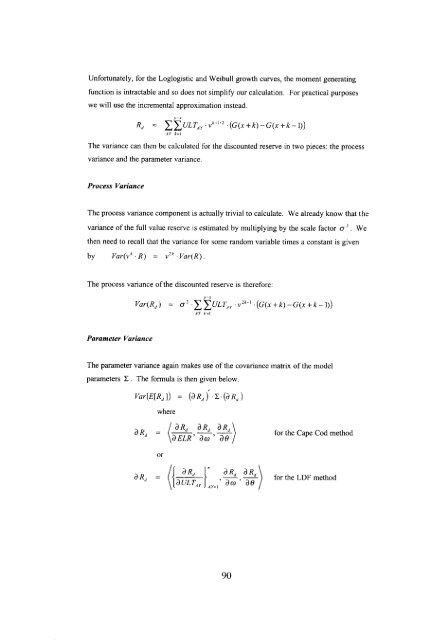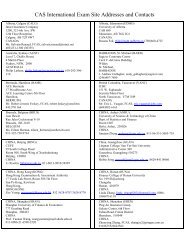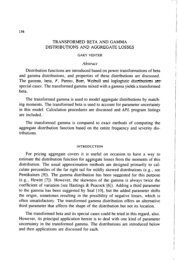LDF Curve-Fitting and Stochastic Reserving: A Maximum Likelihood ...
LDF Curve-Fitting and Stochastic Reserving: A Maximum Likelihood ...
LDF Curve-Fitting and Stochastic Reserving: A Maximum Likelihood ...
Create successful ePaper yourself
Turn your PDF publications into a flip-book with our unique Google optimized e-Paper software.
Unfortunately, for the Logtogistic <strong>and</strong> Weibull growth curves, the moment generatingfunction is intractable <strong>and</strong> so does not simplify our calculation. For practical purposeswe will use the incremental approximation instead.y-xR~ ~ ~,YyLTA,.v ..... (G(~ +k)-G(~ +k- 1))AY k-[The variance can then be calculated for the discounted reserve in two pieces: the processvariance <strong>and</strong> the parameter variance.Process VarianceThe process variance component is actually trivial to calculate. We already know that thevariance of the full value reserve is estimated by multiplying by the scale factor a 2. Wethen need to recall that the variance for some r<strong>and</strong>om variable times a constant is givenby Var(v ~ .R) = v 2k .Var(R).The process variance of the discounted reserve is therefore:yxVar(Rd) = crZ. y~yULTA,..v2k-l.(G(x +k)-G(x +k-l))AY k~lParameter VarianceThe parameter variance again makes use of the covariance matrix of the modelparameters Z. The formula is then given below.Var(E[Ra] ) = (ORa)'.Z.(c3R,)where= L ORa ORa 0-~) fortheCapeCodmethod~Ra \~ELR' ~' -aR~orlfor the <strong>LDF</strong> method90





